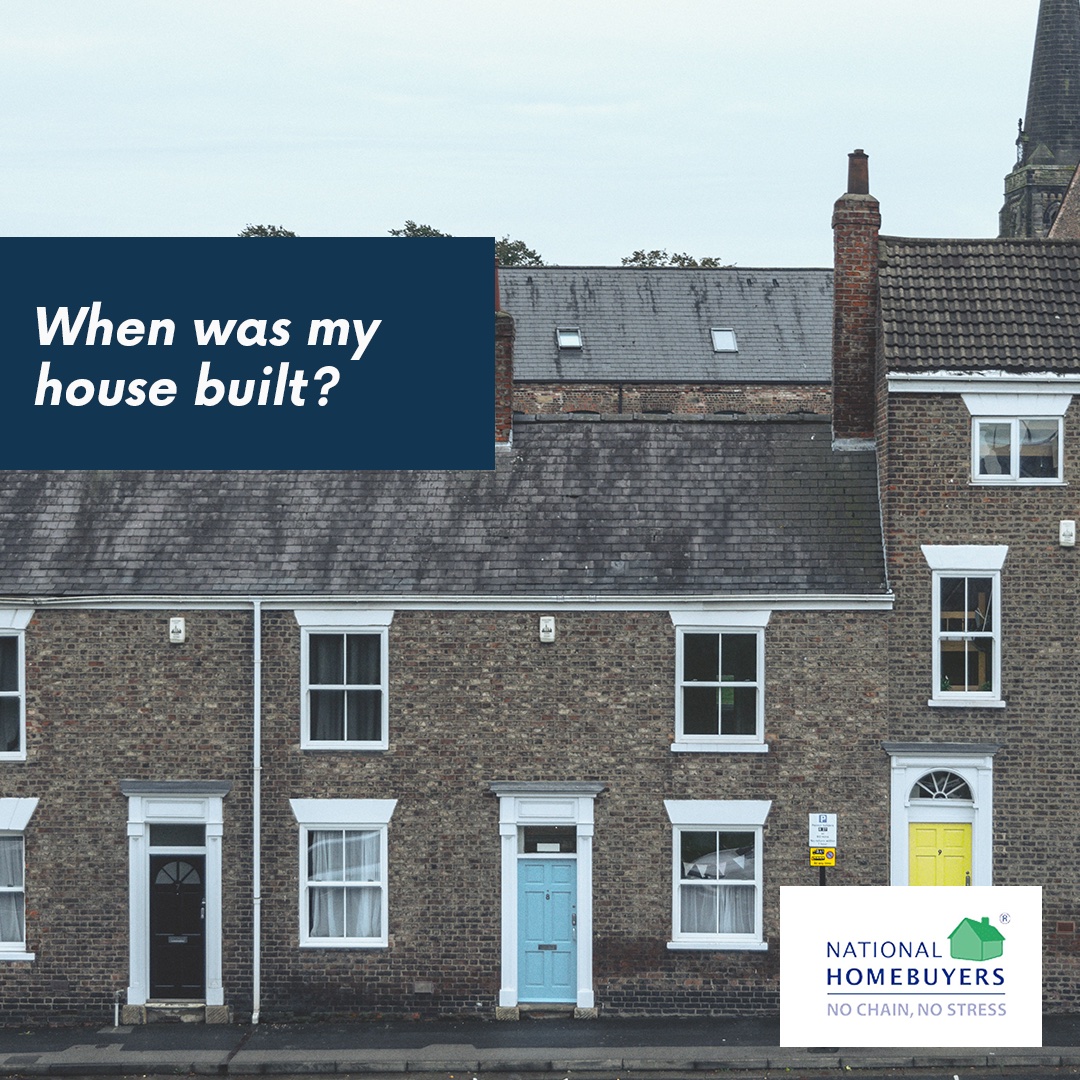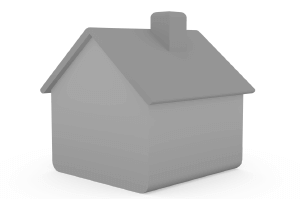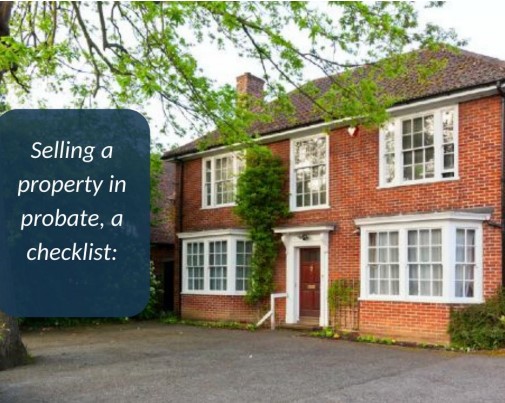When was my house built?
If you’re buying or selling a property, taking out building insurance or just curious, most people will ask “When was my house built”. Knowing the age of your home can also reveal interesting historical information, useful construction details, and whether it’s likely to increase or depreciate in value.
Typically houses under 50 years old would be considered as a new build, and anything over that would be classed as old or traditional. If you own a period home, or are thinking about buying a house from a particular historical era, then it’s useful to know the architectural features to look for, especially if you want to restore and maintain them.
Many properties from between 1930 until 1980 could have asbestos insulation, for example. Although much of this has now been removed and replaced, it can still be extremely dangerous.
But how can you find out when your house was built?
Home surveys and sales information
If a property is advertised for sale, the age may be included in the house listing or on the property information form required as part of the process. Or you can make a note to ask the seller themselves.
A home survey will generally be part of the buying process. It’s a good idea to have a chartered surveyor assess a property when you’re making an offer, and it’s usually required as part of securing a mortgage. At a cost of up to £500, a home or mortgage survey should also highlight what building materials have been used and other useful details.
HM Land Registry and Title Deeds
You can find records and official copies of the Title Register and Title Plan for a property via HM Land Registry. But it’s important to remember that these are for land ownership, not necessarily what has been built on it.
This means you can see when the first transfer was made, so it will give you a rough date if your home was sold by the developer who built it.
The other limitation is that HM Land Registry came into existence in 1862, but it took until 1990 for the whole of England and Wales to be subject to compulsory registration. Which means around 14% of land was still unregistered in 2019, and information may not exist for older properties.
The 1862 Act Register of land and property records was the first attempt to list ownership details across England and Wales. And the 272 volumes of handwritten and typed pages are accessible for free via the Gov.uk website.
Local council and authority archives
Local authorities across England and Wales will usually keep their own archives, which may be accessible online or in person. These can include maps, photographs, directories or newspapers which may include information about your property.
If you’re not sure which council records would apply, you can enter the relevant postcode into a local archives search, and this should direct you to the relevant authority.
Census Records
It may not give you an exact date, but you can narrow down when your house was built by looking at the historical census records available online. Held every 10 years, the information is made public 100 years after the date they were conducted, so you can currently look at details from 1841 until 1911.
While the census was intended to provide information about the population rather than individual details, addresses were required from 1851 and notes were made of buildings which were uninhabited or under construction.
Census returns for Scotland are available from 1841 to 1911, but unfortunately most information for Ireland was lost due to a fire in 1922, with only the 1901 and 1911 information surviving.
Ask your neighbours and local sources
Your neighbours can be a useful source of knowledge. They may have conducted research on the age of their own property, or know more details from the previous occupants of your home.
If the people living next door can’t help, then you can look for other sources of local information. Estate agents in your area may have kept details of previous sales, and should have some knowledge of the local area.
You can also check for local history societies and historians. Many may already have a surprising amount of information about your area, or enjoy being set the challenge of identifying when your house was built, and you may find out some fascinating stories at the same time.
The history of your area is likely to supply useful clues. Rows of identical homes in previously industrial areas are likely to have been purpose-built for mill and factory employees. But if your house stands out in an area which may have suffered bombing during the second world war, it’s likely to have replaced a destroyed house.
Checking old maps
Another way to narrow down the date your home was built is to reference historical maps. These can be found via the Ordnance Survey or other archives such as Old Maps, which even includes National Grid and Russian cold war target locations alongside OS mapping.
Checking Heritage and Historic Lists
If you have an older home which may be nationally protected, you can search the National Heritage List for England, the Cadw historic assets for Wales, or Historic Environment Scotland. This will be important not only to date your house, but also to ensure you know what action to take if you need to make any changes to the building for maintenance or improvement.
For example, it’s recommended to seek advice before making changes to windows or doors in a listed house, because specific building consent may apply.
Investigate your home
There are some surprising ways that looking around your property can help you answer “When was my house built” along with the more obvious architectural features.
For example, if your bathroom still has the original sink or bathtub, then you can often find the date of construction underneath. But you can also roughly date a house simply by looking at the relevant features.
Tudor houses from the 1480s to 1600s will tend to be thatched, or will have a roof with a steep tiled gradient and tall chimneys. They will tend to be less symmetrical than modern homes, with top floors overhanging slightly, and exposed timber frames.
Jacobean and Stuart homes from 1603-1714 saw the introduction of symmetry, sash windows and grand wooden staircases. Large living rooms and wide fireplaces will feature, along with separate servants quarters in larger properties, and some homes will feature external cornicing.
Georgian properties date from 1714-1830 with tall townhouses of three or more storeys, rectangular windows and a roof with a gentle slope. As in the previous era, rooms tend to be generously sized with high ceilings and sash windows, including large reception rooms with fireplaces.
Victorian houses from 1830-1901 have high ceilings, but the gothic designs include large bay windows and offset entrances leading into narrow hallways, often with geometrically tiled floors. The roof will often have intricately designed gables with a spire or ornament at the top.
Queen Anne homes from 1880-1900 add more ornate brickwork, often red to contrast with white stone-framed windows. Along with a round oculus towards the top of the front of the house, smaller oriel bay windows are also common.
Edwardian properties from 1901-1914 often feature mock-Tudor cladding, vast gardens, and Art Nouveau stained glass. Hallways once again increased in size to match the wider and brighter rooms throughout, with intricate details including carvings outside and parquet floors inside.
Addison homes were introduced in 1919 to satisfy the post-war demand for working class homes. Based on country cottages, the three or four room designs were often red bricked and partially rendered with Stucco or pebbledash. The properties were often set back from the pavement with front and rear gardens in avenues, crescents and cul-de-sacs.
30s semis are some of the most common homes in the UK, built from 1920-1939 with wide bay windows, red brick construction (often with under rend or pebbledashed), and a gradually sloped roof. They normally include garages, large gardens and off-street parking spaces.
Art Deco homes were often built during the 1920-1940 period with flat roofs, smooth white painted render and striking geometric designs featuring extravagantly shaped windows.
Airey/BISF houses in the 1940s were another post-war response to housing shortages, which used concrete rather than brick or stone. With small windows and no porch, the houses were mass produced in factories before being transported and assembled. They’re now difficult to finance via a mortgage as they were listed in the 1984 Housing Defects Act.
60s-70s Terrace and Semis will obviously date from the 1970s with big flat windows and external hanging tiles or weatherboarding (either wood or plastic). Floors are usually concrete slabs, and 1970s houses were the first to include insulation. Normally rectangular or L-shaped, they often feature an open plan kitchen and dining room, with a separate living room.
1990s new builds have offered a wide variety of options since the 1990s, but many will feature modern red and yellow bricks which tend to have a rougher texture than in previous eras, and clay tile roofs. Lower ceilings are common for energy efficiency.
How age can impact selling your home
Some house buyers will be searching for period properties with classic style and charm. But the increased cost and maintenance can be a downside, particularly if changes are restricted by historic listing. Or if there are concerns with hazardous materials used in the past, a history of neglect, or in the case of some homes, you can no longer get mortgages.
Rules and incentives for energy efficiency are only likely to continue to increase, making new builds more attractive, particularly for busy home buyers who might not have time to maintain an older home and large outdoor spaces.
If you’re selling a particular unusual home, then you might have to wait longer for the right buyer. So for a quick house sale, you could benefit from getting an estimate from a reliable home buying service.
If you are interested in selling your house for cash, give National Homebuyers a call on 08000 443 911 or request a call back from one of our helpful team to find out how much you could get for your property.






